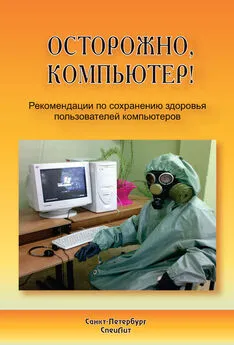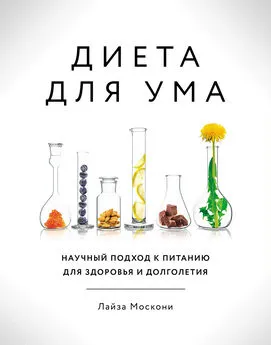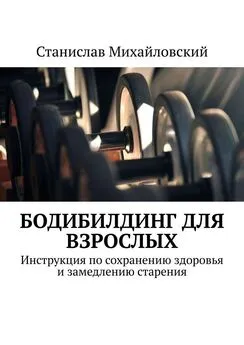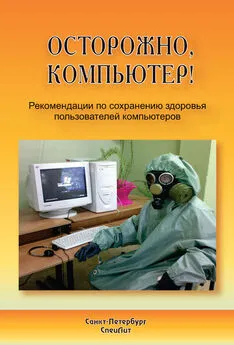Андрей Фоменко - Фокус на жизнь: Научный подход к продлению молодости и сохранению здоровья
- Название:Фокус на жизнь: Научный подход к продлению молодости и сохранению здоровья
- Автор:
- Жанр:
- Издательство:неизвестно
- Год:2021
- ISBN:9785907470569
- Рейтинг:
- Избранное:Добавить в избранное
-
Отзывы:
-
Ваша оценка:
Андрей Фоменко - Фокус на жизнь: Научный подход к продлению молодости и сохранению здоровья краткое содержание
Фокус на жизнь: Научный подход к продлению молодости и сохранению здоровья - читать онлайн бесплатно ознакомительный отрывок
Интервал:
Закладка:
18. Lynn, S. J., Rhue, J. W., & Weekes, J. R. (1990). Hypnotic involuntariness: A social cognitive analysis. Psychological Review, 97(2), 169–184. doi: 10.1037/0033–295X.97.2.169.
Глава 4. Позитивное мышление
1. Rein G., Atkinson M., McCraty R. The Physiological and Psychological Effects of Compassion and Anger. Journal of Advancement in Medicine. 1995; 8(2): 87–105. https://www.heartmath.org/research/research-library/basic/physiological-and-psychological-effects-of-compassion-and-anger/.
2. Segerstrom S. C., Sephton S. E. Optimistic expectancies and cell-mediated immunity: the role of positive affect. Psychol Sci. 2010;21(3):448–455. doi: 10.1177/0956797610362061.
3. Zahrt O. H., Crum A J. Perceived physical activity and mortality: Evidence from three nationally representative U.S. samples. Health Psychol. 2017;36(11):1017–1025. doi: 10.1037/hea0000531.
4. Giltay E. J., Kamphuis M. H., Kalmijn S., Zitman F. G., Kromhout D. Dispositional optimism and the risk of cardiovascular death: the Zutphen Elderly Study. Arch Intern Med. 2006;166(4):431–436. doi: 10.1001/archinte.166.4.431.
5. Szondy M. Optimizmus és immunfunkciók. Mentálhigiéné és Pszichoszomatika, 5 (4). 2004. doi: 10.1556/Mental.5.2004.4.2.
6. Goodin B. R., Kronfli T., King C. D., Glover T. L., Sibille K., Fillingim R. B. Testing the relation between dispositional optimism and conditioned pain modulation: does ethnicity matter? J Behav Med. 2013;36(2):165–174. doi: 10.1007/s10865–012–9411–7.
7. Geers A. L., Wellman J. A., Fowler S. L., Helfer S. G., France C. R. Dispositional optimism predicts placebo analgesia. J Pain. 2010;11(11):1165–1171. doi: 10.1016/j.jpain.2010.02.014.
8. Hernandez R., Vu T. T., Kershaw K. N., et al. The Association of Optimism with Sleep Duration and Quality: Findings from the Coronary Artery Risk and Development in Young Adults (CARDIA) Study. Behav Med. 2020;46(2):100–111. doi: 10.1080/08964289.2019.1575179.
9. Scheier M. F., Matthews K. A., Owens J. F., et al. Optimism and rehospitalization after coronary artery bypass graft surgery. Arch Intern Med. 1999;159(8):829–835. doi: 10.1001/archinte.159.8.829.
10. Lee L. O., James P., Zevon E. S., et al. Optimism is associated with exceptional longevity in 2 epidemiologic cohorts of men and women. Proceedings of the National Academy of Sciences. Sep 2019, 116 (37) 18357–18362. doi: 10.1073/pnas.1900712116.
11. Carver C. S., Scheier M. F. Dispositional optimism. Trends Cogn Sci. 2014;18(6):293–299. doi: 10.1016/j.tics.2014.02.003.
12. Srivastava S., McGonigal K. M., Richards J. M., Butler E. A., Gross J. J. Optimism in close relationships: How seeing things in a positive light makes them so. J Pers Soc Psychol. 2006;91(1):143–153. doi: 10.1037/0022–3514.91.1.143.
13. Kwak S., Kim H., Chey J., YoumY. Feeling How Old I Am: Subjective Age Is Associated With Estimated Brain Age. Front Aging Neurosci. 2018;10:168. Published 2018 Jun 7. doi: 10.3389/fnagi.2018.00168.
14. Whitfield J. B., Zhu G., Landers J. G. et al. Pessimism is associated with greater all-cause and cardiovascular mortality, but optimism is not protective. Sci Rep 10, 12609 (2020). doi: 10.1038/s41598–020–69388-y.
15. Malouff J. M., Schutte N. S. Can psychological interventions increase optimism? A meta-analysis. The Journal of Positive Psychology 12(6):1–11 (2016). doi: 10.1080/17439760.2016.1221122.
16. Meevissen Y. M., Peters M. L., Alberts H. J. Become more optimistic by imagining a best possible self: effects of a two week intervention. J Behav Ther Exp Psychiatry. 2011;42(3):371–378. doi: 10.1016/j.jbtep.2011.02.012.
17. van Middendorp H., Kox M., Pickkers P., Evers A. W. The role of outcome expectancies for a training program consisting of meditation, breathing exercises, and cold exposure on the response to endotoxin administration: a proof-of-principle study. Clin Rheumatol. 2016;35(4):1081–1085. doi: 10.1007/s10067–015–3009–8.
18. Heckenberg R. A., Hale M. W., Kent S., Wright B. J. An online mindfulness-based program is effective in improving affect, over-commitment, optimism and mucosal immunity. Physiol Behav. 2019;199:20–27. doi: 10.1016/j.physbeh.2018.11.001.
19. Marmolejo-Ramos F., Murata A., Sasaki K., et al. Your Face and Moves Seem Happier When I Smile. Facial Action Influences the Perception of Emotional Faces and Biological Motion Stimuli. PsyArXiv. 2020. doi: 10.31234/osf.io/4uvdq.
20. Alimujiang A., Wiensch A., Boss J., et al. Association Between Life Purpose and Mortality Among US Adults Older Than 50 Years. JAMA Netw Open. 2019;2(5): e194270. doi: 10.1001/jamanetworkopen.2019.4270.
21. Marone S., Bloore K., Sebastiani P., Flynn C., Leonard B., Whitaker K., Mostowy M., Perls T. T., Andersen S. L. Purpose in Life Among Centenarian Offspring. J Gerontol B Psychol Sci Soc Sci. 2020 Jan 14;75(2):308–315. doi: 10.1093/geronb/gby023. PMID: 29522128; PMCID: PMC7179803.
22. Hill P. L., Turiano N. A. Purpose in life as a predictor of mortality across adulthood. Psychol Sci. 2014 Jul;25(7):1482–6. doi: 10.1177/0956797614531799. Epub 2014 May 8. PMID: 24815612; PMCID: PMC4224996.
Глава 5. Осознанность расширяет границы возраста
1. American Mindfulness Research Association. https://goamra.org/about/.
2. Zullo J. M., Drake D., Aron L. et al. Regulation of lifespan by neural excitation and REST. Nature 574, 359–364 (2019). doi: 10.1038/s41586–019–1647–8.
3. Mrazek M. D., Franklin M. S., Phillips D. T., Baird B., Schooler J. W. Mindfulness training improves working memory capacity and GRE performance while reducing mind wandering. Psychol Sci. 2013;24(5):776–781. doi: 10.1177/0956797612459659.
4. Kober H., Buhle J., Weber J., Ochsner K. N., Wager T. D. Let it be: mindful acceptance down-regulates pain and negative emotion. Soc Cogn Affect Neurosci. 2019;14(11):1147–1158. doi: 10.1093/scan/nsz104.
5. Loucks E. B., Nardi W. R., Gutman R., Kronish I. M., Saadeh F. B., Li Y., et al . (2019) Mindfulness-Based Blood Pressure Reduction (MB-BP): Stage 1 single-arm clinical trial. PLoS ONE14(11): e0223095. doi: 10.1371/journal.pone.0223095.
6. Bauer C. C. C., Caballero C., Scherer E., West M. R., Mrazek M. D., Phillips D. T., Whitfield-Gabrieli S., & Gabrieli J. D. E. (2019). Mindfulness training reduces stress and amygdala reactivity to fearful faces in middle-school children. Behavioral Neuroscience, 133(6), 569–585. doi: 10.1037/bne0000337.
7. Ramel1 W., Goldin P. R., Carmona P. E. et al. The Effects of Mindfulness Meditation on Cognitive Processes and Affect in Patients with Past Depression. Cognitive Therapy and Research 28, 433–455 (2004). doi: 10.1023/B: COTR.0000045557.15923.96.
8. Goyal M., Singh S., Sibinga E. M., et al. Meditation programs for psychological stress and well-being: a systematic review and meta-analysis. JAMA Intern Med. 2014;174(3):357–368. doi: 10.1001/jamainternmed.2013.13018.
9. Kabat-Zinn J., Massion A. O., Kristeller J., et al. Effectiveness of a meditation-based stress reduction program in the treatment of anxiety disorders. Am J Psychiatry. 1992;149(7):936–943. doi: 10.1176/ajp.149.7.936.
10. Arias A. J., Steinberg K., Banga A., Trestman R. L. Systematic review of the efficacy of meditation techniques as treatments for medical illness. J Altern Complement Med. 2006;12(8):817–832. doi: 10.1089/acm.2006.12.817.
11. Tang Y. Y., Tang R., Posner M. I. Brief meditation training induces smoking reduction. Proc Natl Acad Sci U S A. 2013;110(34):13971–13975. doi: 10.1073/pnas.1311887110.
12. Kwok J. Y. Y., Kwan J. C. Y., Auyeung M., et al. Effects of Mindfulness Yoga vs Stretching and Resistance Training Exercises on Anxiety and Depression for People With Parkinson Disease: A Randomized Clinical Trial. JAMA Neurol. 2019;76(7):755–763. doi: 10.1001/jamaneurol.2019.0534.
13. Russell-Williams J., Jaroudi W., Perich T., Hoscheidt S., El Haj M., Moustafa A. A. Mindfulness and meditation: treating cognitive impairment and reducing stress in dementia. Rev Neurosci. 2018;29(7):791–804. doi: 10.1515/revneuro-2017–0066.
14. Mahlo L., Windsor T. D. Older and more mindful? Age differences in mindfulness components and well-being [published online ahead of print, 2020 Mar 2]. Aging Ment Health. 2020;1–12. doi: 10.1080/13607863.2020.1734915.
Глава 6. На что способна визуализация
1. Solbrig, L., Whalley, B., Kavanagh, D.J. et al. Functional imagery training versus motivational interviewing for weight loss: a randomised controlled trial of brief individual interventions for overweight and obesity. Int J Obes 43, 883–894 (2019). doi: 10.1038/s41366–018–0122–1.
2. Ranganathan V. K., Siemionow V., Liu J. Z., Sahgal V., Yue G. H. From mental power to muscle power — gaining strength by using the mind. Neuropsychologia. 2004;42(7):944–956. doi: 10.1016/j.neuropsychologia.2003.11.018.
3. Ruffino C., Gaveau J., Papaxanthis C., Lebon F. An acute session of motor imagery training induces use-dependent plasticity. Sci Rep. 2019;9(1):20002. doi: 10.1038/s41598–019–56628-z.
4. Stanford Health Care. Guided Imagery. https://stanfordhealthcare.org/for-patients-visitors/guided-imagery.html.
5. Richardson M. A., Post-White J., Grimm E. A., Moye L. A., Singletary S. E., Justice B. Coping, life attitudes, and immune responses to imagery and group support after breast cancer treatment. Altern Ther Health Med. 1997;3(5):62–70.
6. Nguyen J., Brymer E. Nature-Based Guided Imagery as an Intervention for State Anxiety. Front Psychol. 2018;9:1858. doi: 10.3389/fpsyg.2018.01858.
7. Weßlau C., Cloos M., Höfling V. et al. Visual mental imagery and symptoms of depression — results from a large-scale web-based study. BMC Psychiatry 15, 308 (2015). doi: 10.1186/s12888–015–0689–1.
8. Menzies V., Taylor A. G., Bourguignon C. Effects of guided imagery on outcomes of pain, functional status, and self-efficacy in persons diagnosed with fibromyalgia. J Altern Complement Med. 2006;12(1):23–30. doi: 10.1089/acm.2006.12.23.
9. Kwekkeboom K. L., Bratzke L. C. A Systematic Review of Relaxation, Meditation, and Guided Imagery Strategies for Symptom Management in Heart Failure. J Cardiovasc Nurs. 2016;31(5):457–468. doi: 10.1097/JCN.0000000000000274.
10. Munroe-Chandler K. J., Guerrero M. D. Psychological Imagery in Sport and Performance. Sports Psychology. doi: 10.1093/acrefore/9780190236557.013.228.
11. Strachan L., Munroe-Chandler K. J. Using Imagery to Predict Self-Confidence and Anxiety in Young Elite Athletes. Journal of Imagery Research in Sport and Physical Activity 1(1):1–19. doi: 10.2202/1932–0191.1004.
12. Cumming J., Williams S. E. (2013). Introducing the revised applied model of deliberate imagery use for sport, dance, exercise, and rehabilitation. Movement & Sport Sciences-Science & Motricité, (82), 69–81. https://www.researchgate.net/publication/258285423_Introducing_the_revised_applied_model_of_deliberate_imagery_use_for_sport_dance_exercise_and_rehabilitation.
13. Wellesley College. Oprah Winfrey’s Commencement Address. May 30, 1997. Accessed wellesley.eduon August 25, 2019. https://www.wellesley.edu/events/commencement/archives/1997commencement/commencementaddress.
Читать дальшеИнтервал:
Закладка:






![Шон Янг - Привычки на всю жизнь [Научный подход к формированию устойчивых привычек]](/books/1096015/shon-yang-privychki-na-vsyu-zhizn-nauchnyj-podhod-k-fo.webp)



